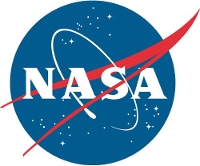
The United States is on the verge of a renaissance in space, with ambitious goals to have astronauts develop a lunar base and explore Mars, as well as accomplishing new science goals using robotic spacecraft. Vice President Pence, who leads the National Space Council recently stated that “… we’re on the cusp of a new golden age of exploration.”
The first step will be developing a presence in “cislunar space” (the area between Earth and the Moon) within the coming decade. NASA is planning to place an orbiting manned station near the moon, and use it to both develop a permanent presence on the lunar surface and use that, in turn, to facilitate a Mars mission.
According to the space agency, it is currently studying the orbital outpost concept in the vicinity of the Moon with U.S. industry and the International Space Station partners. According to NASA, the value of the concept is that “Cislunar space offers affordable near-term opportunities to help pave the way for future global human exploration of deep space, acting as a bridge between present missions and future deep space missions. While missions in cis-lunar space have value unto themselves, they can also play an important role in enabling and reducing risk for future human missions to the Moon, Near-Earth Asteroids, Mars, and other deep space destinations.”
The platform will consist of a power and propulsion element and habitation, logistics and airlock capabilities. NASA plans to launch elements of the gateway on the agency’s upcoming Space Launch System or commercial rockets, for assembly in space.
According to William Gerstenmaier, associate administrator of the NASA’s Human Exploration division, “The Lunar Orbital Platform-Gateway will give us a strategic presence in cislunar space. It will drive our activity with commercial and international partners and help us explore the Moon and its resources. We will ultimately translate that experience toward human missions to Mars.”
The power and propulsion element will be the initial component of the gateway, and is targeted to launch in 2022. Using advanced high-power solar electric propulsion, the element will maintain the gateway’s position and can move the gateway between lunar orbits over its lifetime to maximize science and exploration operations. As part of the agency’s public-private partnership work under Next Space Technologies for Exploration Partnerships, or “NextSTEP,” five companies are completing four-month studies on affordable ways to develop the power and propulsion element. NASA will leverage capabilities and plans of commercial satellite companies to build the next generation of all electric spacecraft.
Habitation capabilities are scheduled for a 2024 launch. Astronauts onboard will participate in a variety of deep space exploration and commercial activities in the vicinity of the Moon, including possible missions to the lunar surface. NASA also wants to leverage the gateway for scientific investigations near and on the Moon.
A Popular Mechanics review of NASA’s plans noted that “This future science station, which will effectively replace the International Space Station when it reaches retirement age in the 2020s, will be a fraction of the size but carry astronauts hundreds of thousands of miles farther into space. In fact, it might travel farther away from our planet than any other human-piloted spacecraft, including the Apollo missions. But the most exciting idea behind this new station, destined to make its home orbiting near the moon (aka a cis-lunar orbit), is it will provide a new foothold for future human missions to Earth’s closest celestial neighbors, like asteroids, the moon itself, and Mars. Because the station is in an egg-shaped orbit, stretching anywhere from 1,500 km to 70,000 km (930 to 44,000 miles) from the Moon, it would need only a little push to be sent flying to a yet-to-be-chosen destination.”
Frank Vernuccio serves as editor-in-chief of the New York Analysis of Policy and Government.
















Follow Us